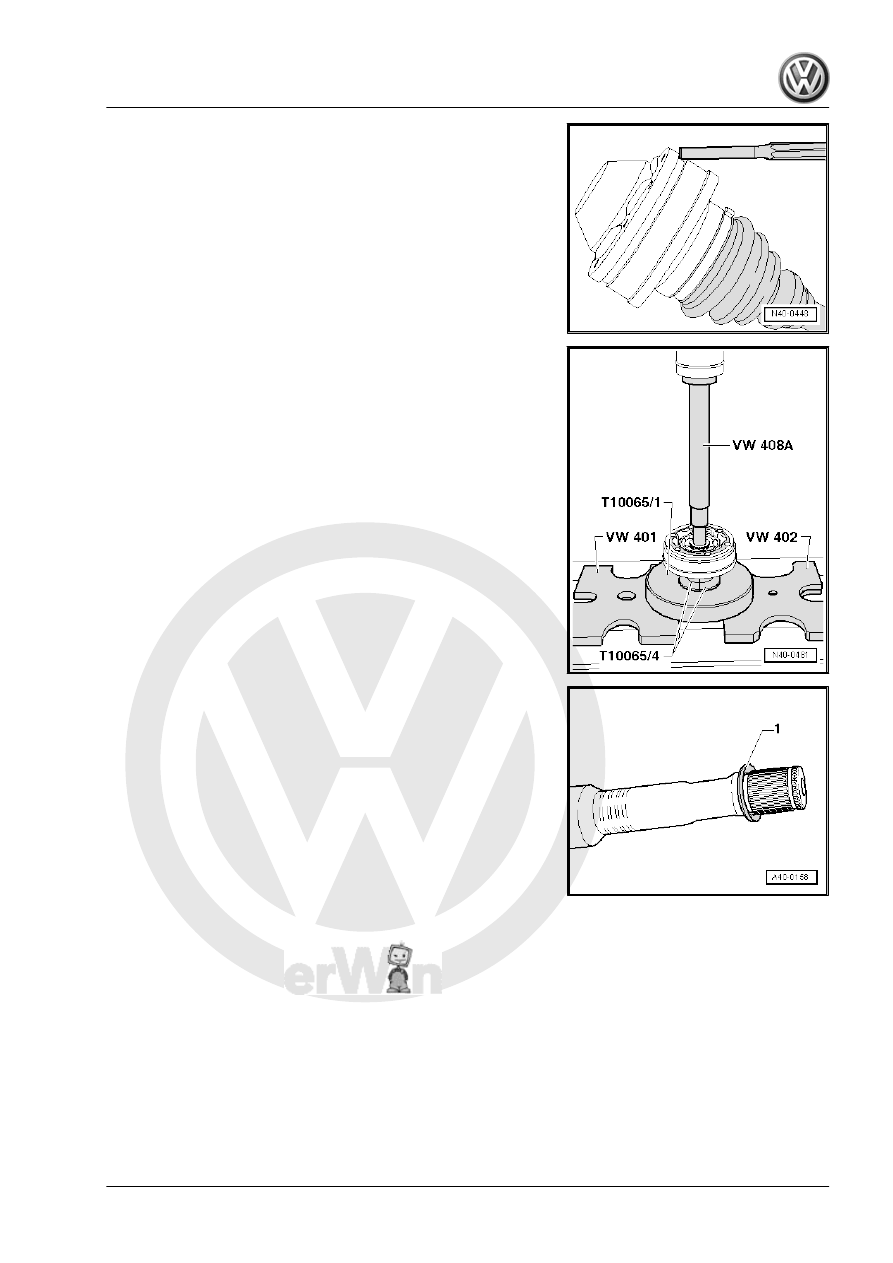Volkswagen Golf / Golf GTI / Golf Variant. Manual - part 866

Drive Off Cover for Inner Joint
Removing the Inner CV Joint
– Press off CV from joint using drift.
– Remove the circlip.
– Remove both clamps, and push the CV boot toward outer joint.
Assembling
Installed Location of the Plate Spring on Inner Joint
1 - Plate Spring